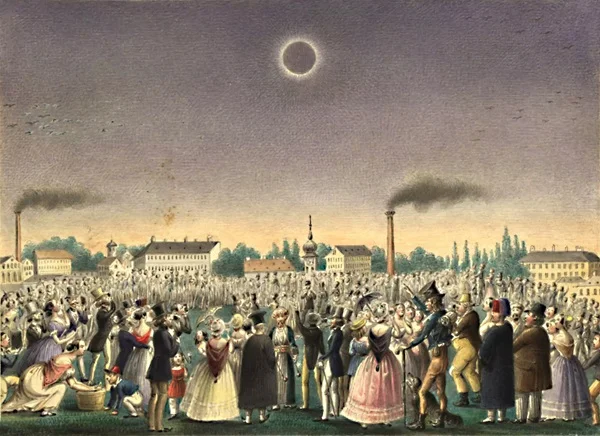The idea that ancient civilizations could predict celestial events like eclipses may seem mystical ( Ancient Cultures Predicted Eclipses ) — almost magical — to the modern mind. But as we dig deeper into archaeological records, ancient texts, and astronomical alignments, one truth becomes increasingly clear: ancient people were brilliant skywatchers.
At spaceyv, we dive into the fascinating intersection of astronomy, history, and human curiosity. In this article, we explore how ancient cultures — with no telescopes or satellites — managed to track the heavens so precisely that they could forecast the sudden disappearance of the Sun or Moon.
Ancient Cultures Predicted Eclipses: A Brief Scientific Primer
Before understanding how ancient people predicted eclipses, we need to understand what they are:
-
A solar eclipse happens when the Moon passes between the Earth and the Sun, casting a shadow on Earth.
-
A lunar eclipse occurs when the Earth passes between the Sun and the Moon, casting its shadow on the Moon.
Eclipses don’t happen every month because the Moon’s orbit is tilted about 5 degrees relative to Earth’s orbit around the Sun. This means eclipses only occur during specific alignments, which ancient skywatchers eventually learned to track.

The Saros Cycle: A Pattern Known to the Ancients
The Saros Cycle is the key to eclipse prediction. It’s a period of approximately 18 years, 11 days, and 8 hours, after which solar and lunar eclipses repeat with nearly identical geometry.
Although this cycle wasn’t formally named until modern times, ancient Babylonians had discovered it thousands of years ago. Clay tablets from the 7th century BCE — part of the Babylonian Astronomical Diaries — document detailed records of lunar and solar eclipses, showing they recognized this repeating pattern.
Babylon: Masters of Eclipse Prediction
The Babylonians are perhaps the earliest known culture to mathematically predict eclipses. Without computers, they relied on meticulous observations recorded over generations. Their system, known as the Enuma Anu Enlil, combined astronomy with astrology and included more than 70 tablets about celestial omens.
They didn’t just track eclipses; they knew when they were likely to occur and associated them with the fate of kings and empires.

China: Solar Eclipses and the Mandate of Heaven
Ancient Chinese astronomers viewed eclipses as celestial warnings. Solar eclipses, in particular, were tied to the emperor’s rule. A famous story tells of court astronomers Hi and Ho, who were executed around 2134 BCE for failing to predict a solar eclipse — a sign that the heavens were displeased.
Chinese astronomers developed the “Shoushi calendar” and used water clocks, star maps, and shadow measurements to predict celestial events. By 100 BCE, they had a decent grasp of the lunar cycle and eclipse prediction.
Mesoamerica: The Maya and Their Cosmic Precision
Few civilizations matched the astronomical sophistication of the Maya. They used a vigorous calendar system — including the Tzolk’in (260 days), Haab’ (365 days), and the Long Count — to track celestial cycles, including eclipses.
The Dresden Codex, one of the few surviving Mayan books, contains a full eclipse table spanning decades. Scholars believe the Maya used this to predict solar and lunar eclipses by tracking the position of the Moon and noting repeating patterns. Their math was so advanced they even accounted for the 584-day Venus cycle — linking eclipses to other celestial events.
India: Eclipse Knowledge in the Vedas
In ancient India, eclipses were often described using mythology — particularly the story of Rahu and Ketu, the demon serpents who swallowed the Sun and Moon. But Indian astronomers also developed astronomical models grounded in mathematics.
Texts like the Surya Siddhanta (circa 4th–5th century CE) outline methods to calculate the positions of celestial bodies. Indian scholars had a strong understanding of lunar nodes — the points where eclipses occur — long before these were formally understood in Western science.
Greece: Geometry Meets the Heavens
Greek philosophers and astronomers took a more mathematical and geometric approach to predicting eclipses. Hipparchus (2nd century BCE) and Ptolemy (2nd century CE) developed models that included the eccentricities of lunar orbits.
Most impressively, the Antikythera Mechanism, discovered in a shipwreck and dated to around 100 BCE, is an ancient Greek analog computer that predicted eclipses based on the Saros cycle. This mechanical marvel tracked lunar and solar cycles and even included a “prediction dial” for eclipses.
Egypt: Symbolism Over Science
Unlike the Babylonians or Greeks, ancient Egyptians did not leave detailed mathematical eclipse records. Their focus was more symbolic and religious. Eclipses were often linked with chaos and divine battles, such as the Sun god Ra being attacked by the serpent Apep.
However, evidence suggests that temple alignments and shadow measurements played a role in timekeeping, and solar alignment at solstices was clearly known — meaning they likely observed and responded to eclipses, even if not predictively.
Norse and Indigenous Cultures: Myth and Observation
The Norse people believed wolves chased the Sun and Moon, devouring them during eclipses — a reflection of their understanding of eclipse transience and recurrence.
Indigenous peoples around the world, including those in North America, Australia, and Polynesia, had complex oral traditions that recorded repeating sky phenomena, often linking eclipses to rituals, agricultural timing, or cosmic cycles.
While not always mathematical, their observational knowledge was profound and often encoded in myths, petroglyphs, and story cycles passed down for generations.
Why It Matters Today
The fact that ancient cultures could predict eclipses without modern tools is a testament to human intellect and curiosity. They observed, recorded, passed on, and improved — creating early forms of empirical science.
Today, NASA can forecast eclipses centuries into the future using orbital mechanics. But every precise modern prediction rests on the foundations built by ancient skywatchers who looked up and noticed the patterns.
Their legacy lives on in:
-
Modern astronomy
-
Cultural celebrations
-
Ancient calendars still in use
-
Our growing respect for indigenous and ancient knowledge systems
At spaceyv, we believe that understanding the past is key to imagining the future. And in the stars above, ancient minds left a legacy of wonder, science, and shared human curiosity.

References
Steele, J. M. (2000). Observations and Predictions of Eclipse Times by Early Astronomers. Springer.
Neugebauer, O. (1957). The Exact Sciences in Antiquity. Princeton University Press.
NASA Eclipse Website. https://eclipse.gsfc.nasa.gov
Britton, J. P. (1999). “A Survey of Babylonian Astronomy”. In Planetary Astronomy from the Renaissance to the Rise of Astrophysics. Cambridge University Press.
Pingree, D. (1978). “The Mesopotamian Origin of Early Indian Mathematical Astronomy.” Journal for the History of Astronomy.



